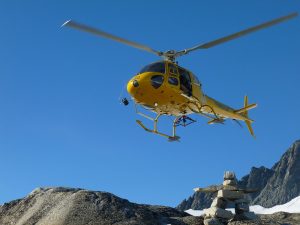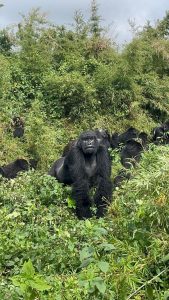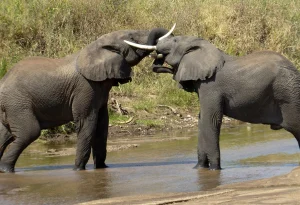A combined Uganda and Kenya safari offers one of the most diverse, enriching, and exhilarating wildlife experiences in Africa. While Kenya is renowned for its classic savannah safaris, dramatic landscapes, and the Great Migration, Uganda complements this with its lush rainforests, gorilla trekking, and raw, off-the-beaten-path appeal. Together, they create a perfect safari symphony—uniting thrilling wildlife encounters, rich cultures, and unforgettable scenery across two unique African nations.
In this comprehensive guide, we explore everything you need to know to plan and enjoy a seamless Uganda and Kenya safari: from what to do, where to go, when to visit, how to combine logistics, and the best ways to get the most out of your journey.
Why Combine Uganda and Kenya in One Safari?
Combining Uganda and Kenya allows you to witness the full spectrum of East African wildlife and ecosystems. In Kenya, you get vast savannahs teeming with predators and migratory herds; in Uganda, you trek through mountain rainforests to meet gorillas and chimpanzees face to face. This blend of experiences is rare and adds significant depth and variety to your safari.
Key benefits include:
- See the Big Five and Great Migration in Kenya
- Track mountain gorillas and chimpanzees in Uganda
- Enjoy contrasting ecosystems—savannahs, lakes, forests, and wetlands
- Experience diverse cultures and communities
- Optimize travel by combining well-developed infrastructure (Kenya) with pristine adventure (Uganda)
What Is the Best Itinerary for a Uganda and Kenya Safari?
To make the most of this combined adventure, many travelers start in Uganda and finish in Kenya, or vice versa, depending on international flight options and seasonal considerations. Here’s a sample two-week itinerary that balances trekking, game drives, and cultural exploration:
Day 1–3: Kampala & Bwindi Impenetrable Forest (Uganda)
Arrive in Entebbe or Kampala. Transfer to Bwindi for a once-in-a-lifetime gorilla trekking experience. This is one of the highlights of any East African safari.
Day 4–5: Queen Elizabeth National Park
Drive or fly to Queen Elizabeth National Park for game drives, boat cruises on the Kazinga Channel, and a chance to see tree-climbing lions in Ishasha.
Day 6–7: Kibale Forest National Park
Continue to Kibale for chimpanzee trekking, a thrilling and very different primate experience. Kibale is also home to 12 other primate species.
Day 8–9: Travel to Kenya via Entebbe/Nairobi
Fly back to Entebbe, then connect to Nairobi, Kenya. Rest overnight or do a brief city tour.
Day 10–12: Maasai Mara National Reserve
Fly or drive to the Maasai Mara, one of Africa’s most iconic safari destinations. Time it with the Great Migration (July to October) for maximum drama. Enjoy spectacular wildlife viewing.
Day 13–14: Lake Nakuru or Amboseli National Park
Round out your Kenya safari with either:
- Lake Nakuru, known for flamingos and rhinos, or
- Amboseli, for unbeatable views of Mount Kilimanjaro and large elephant herds.
What Are the Top Safari Parks in Uganda and Kenya?
Top Destinations in Uganda:
- Bwindi Impenetrable National Park – Mountain gorillas
- Kibale Forest – Chimpanzee trekking
- Queen Elizabeth National Park – Tree-climbing lions and boat cruises
- Murchison Falls National Park – Powerful waterfalls and game viewing
- Lake Mburo National Park – Zebras, hippos, and walking safaris
Top Destinations in Kenya:
- Maasai Mara National Reserve – Big cats and the Great Migration
- Amboseli National Park – Elephants and views of Kilimanjaro
- Lake Nakuru National Park – Flamingos and white rhinos
- Samburu National Reserve – Unique species like the Grevy’s zebra
- Tsavo East and West – Vast, wild, and less crowded parks
When Is the Best Time to Visit Uganda and Kenya?
East Africa’s climate is generally pleasant year-round, but certain months offer better wildlife visibility and more manageable weather.
Best Time to Visit Kenya:
- July to October – Peak dry season and Great Migration
- January to March – Warm, dry, and good for game viewing
Best Time to Visit Uganda:
- June to September and December to February – Dry seasons, ideal for gorilla trekking and safaris
Rainy seasons (March–May and October–November) are less ideal for trekking but can offer fewer crowds and lush scenery.
Do I Need Visas for Both Countries?
Yes. Uganda and Kenya each require separate visas for most international travelers. However, you can simplify the process with the East African Tourist Visa, which allows multiple entries to Uganda, Kenya, and Rwanda for 90 days. Apply online through the consulate of the country you’ll first enter.
Documents typically required:
- Valid passport with at least six months validity
- Yellow Fever vaccination certificate (required for Uganda)
- Proof of accommodation or itinerary
What Are the Transportation Options Between Uganda and Kenya?
By Air:
- Several regional carriers operate flights between Entebbe International Airport (Uganda) and Jomo Kenyatta International Airport (Kenya).
- Local charters connect national parks (e.g., from Bwindi or Queen Elizabeth to Nairobi or Maasai Mara).
By Road:
- Road connections exist via Busia or Malaba border crossings, but overland travel can be slow and requires careful planning.
- A road safari is best managed by a tour operator familiar with cross-border logistics.
What Are the Accommodation Options?
Both countries offer a wide range of accommodation options:
- Luxury lodges with panoramic views, fine dining, and personalized service
- Mid-range safari camps and eco-lodges with comfort and character
- Budget guesthouses or campsites for backpackers and DIY travelers
In Uganda, accommodations near gorilla trekking zones (like Buhoma or Rushaga) fill up fast. In Kenya, booking a tented camp inside or near the Maasai Mara guarantees proximity to wildlife action.
Is It Safe to Travel in Uganda and Kenya?
Both countries are considered generally safe for tourists. However:
- Use registered guides and tour operators
- Avoid nighttime travel in rural areas
- Be mindful of your belongings in cities
- Follow all wildlife safety protocols
Travel insurance is recommended, and you should consult your doctor regarding malaria prophylaxis and routine vaccinations before traveling.
Can I Do This Safari on My Own or Should I Use a Tour Operator?
While adventurous travelers can self-organize, most prefer using a reputable tour operator due to:
- Cross-border coordination
- Permit reservations (especially for gorilla trekking)
- Ground transportation across remote areas
- Knowledgeable guides who enhance your experience
Whether you prefer a private custom safari or a small group tour, planning through a trusted operator ensures efficiency and peace of mind.
Final Thoughts
A combined Uganda and Kenya safari is an East African masterpiece offering a rare blend of adventure, wildlife, culture, and landscapes. From locking eyes with a silverback gorilla in the misty jungles of Bwindi to witnessing the thunder of hooves during the Great Migration in the Maasai Mara, this journey brings together the best of two very different but complementary safari worlds.
The key to an unforgettable experience lies in smart planning consider your interests, travel season, pace, and how much time you have. Whether you want to track primates, photograph predators, or just take in the drama of wild Africa, Uganda and Kenya together deliver a safari like no other. Combined Uganda and Kenya Safari




